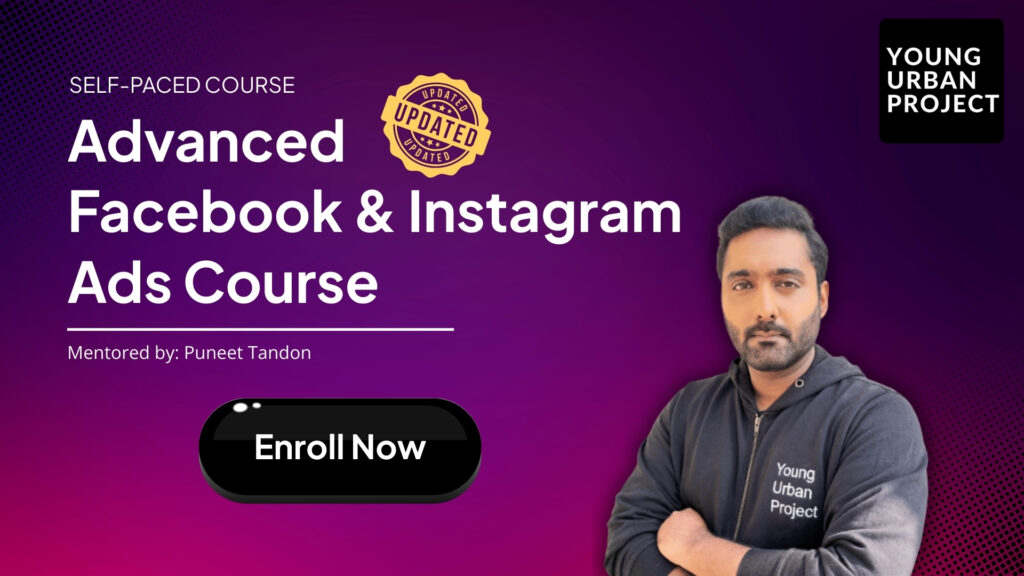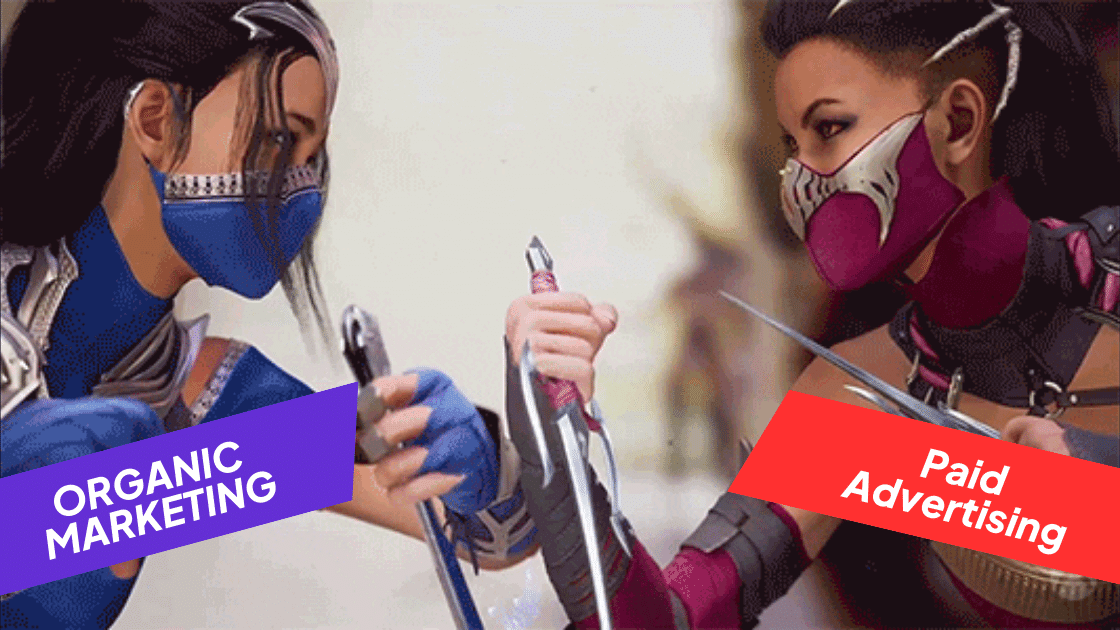Let’s settle the debate!
In the fast-paced world of digital marketing, one question often sparks heated debates among marketers: Where should brands focus on – organic marketing vs paid advertising?
It’s a topic that has garnered significant attention, with compelling arguments on both sides.
In this blog post, we’ll dive deep into the realm of online paid advertising versus organic marketing, shedding light on why the best approach is to embrace both strategies. So, fasten your seatbelts as we explore the dynamic duo that can propel your digital marketing success!
Table of Contents
Organic Marketing vs Paid Advertising – Meet the Contenders

Let’s start by understanding what organic marketing vs paid advertising entail from a digital perspective.
Organic marketing involves nurturing your brand’s growth naturally, employing various channels such as search engine optimization (SEO), content marketing, social media engagement, and email marketing.
It’s like tending to a garden, carefully planting seeds, and cultivating relationships with your audience.
On the other hand, paid advertising offers immediate visibility by investing in platforms like search engine ads, social media ads, display ads, and sponsored content.
It’s akin to igniting fireworks that instantly light up the sky, capturing the attention of your target audience and driving traffic to your brand.
The Pros and Cons of Organic Marketing vs Paid Advertising
Now, let’s delve into the pros and cons of both organic marketing vs paid advertising, allowing you to make an informed decision about the best strategy for your brand.
Organic Marketing: The Magic of Natural (unpaid) Growth
Pros:
- Cost-effectiveness: Organic marketing doesn’t require a substantial financial investment. It relies on your efforts to create valuable content and engage with your audience organically.
- Long-term sustainability: By consistently producing high-quality content and optimizing your website for search engines, you can attract organic traffic over time, creating a solid foundation for your brand.
- Authenticity and trust-building: When your audience discovers your brand organically, they perceive it as more trustworthy and credible. Building authentic relationships with your audience fosters loyalty and advocacy.
Cons:
- Time and effort: Organic growth takes time and effort. It demands patience and a well-crafted strategy to see results. It’s like tending to a garden, requiring consistent nurturing and attention.
- Limited control: While you can influence organic growth, you have limited control over when and how your content reaches your audience. It depends on search engine algorithms, social media algorithms, and user engagement.

CheckOut: Advanced Facebook Ads Course
Paid Advertising: Instant Visibility, Measurable Results
Pros:
- Instant visibility: Paid advertising offers immediate exposure. With targeted ads on search engines, social media platforms, and other channels, you can reach your desired audience promptly, especially when launching new products or services.
- Precise targeting: Paid advertising allows you to narrow down your target audience based on demographics, interests, and behaviors, ensuring that your message reaches the right people at the right time.
- Measurable results: Paid advertising provides comprehensive analytics and tracking tools to measure the performance of your campaigns accurately. It allows you to optimize your strategies based on data-driven insights.
Cons:
- Cost considerations: While paid advertising can yield quick results, it requires a financial investment. If not executed strategically, it can drain your budget without delivering the desired return on investment.
- Ad blindness and ad-blocking: In today’s digital landscape, users have become accustomed to ads, leading to ad blindness or even ad-blocking software. This challenges marketers to create compelling, engaging, and non-disruptive ad experiences.
🔔 Attention: If you want to master both – Organic & Paid Marketing – and want to become a holistic, 360-degree digital marketer, please check out out 12-week Advanced Digital Marketing Course. It’s a Live, online Mentor-led course and the next cohort starts very soon.
Where should a brand focus on: Blending both Organic & Paid Marketing
Now, here’s the secret sauce: the best approach is to embrace both organic and paid strategies.
It is crucial for brands to embrace both organic marketing vs paid advertising, harnessing the synergy between these two strategies.
Why? Well, let us share a couple of reasons with you.
- Amplifying your marketing impact: By combining organic and paid efforts, you supercharge your marketing impact. Organic marketing acts as the foundation, steadily building your brand’s reputation and attracting loyal followers. Paid advertising accelerates your growth, enabling you to tap into new audiences, generate leads, and gather valuable data for optimization.
- Enhancing effectiveness through synergy: Organic and paid strategies work in harmony, enhancing each other’s effectiveness. For example, by utilizing paid advertising to drive traffic to your well-optimized landing pages, you can boost your organic search rankings. Additionally, your organic content provides a strong foundation for creating targeted paid campaigns, delivering a seamless customer journey and reinforcing your brand’s visibility across multiple touchpoints.
Determining the Right Time for Organic Marketing vs Paid Advertising
The question arises: When should brands start incorporating both organic and paid marketing into their digital strategies? The answer lies in understanding your brand’s goals, budget, and stage of growth.
If you’re just starting out, it might help to focus on building a solid organic presence. Invest time and effort in consistently producing valuable content, optimizing your website for search engines, and engaging with your audience organically.
As your brand gains traction and you have a clearer understanding of your target audience, gradually introduce paid advertising to accelerate your growth and expand your reach.
However, some startup brands need to drive revenue from day-1 in order to build a runway for the future. In that case, the brand can focus on Paid Advertising (Performance Marketing) early on, and later introduce organic marketing to the mix.
Remember, there’s no one-size-fits-all approach. Analyze your brand’s unique needs, experiment with different strategies, and continually adapt based on data and customer feedback. Embrace the dynamic duo of organic and paid advertising, unlocking new possibilities for reaching and engaging your audience.
Conclusion
In the rapidly changing digital marketing ecosystem, the debate between organic marketing vs paid advertising continues.
However, the secret to maximizing your success lies in embracing both strategies. Organic marketing provides long-term sustainability and builds authentic relationships, while paid advertising offers instant visibility and measurable results.
By combining these approaches, you amplify your marketing impact, enhance effectiveness, and create a seamless customer journey.
New here? Get more such content delivered to your inbox every week. Click here to Subscribe to our newsletter.
Also, follow us on Instagram to get more such valuable content daily.

